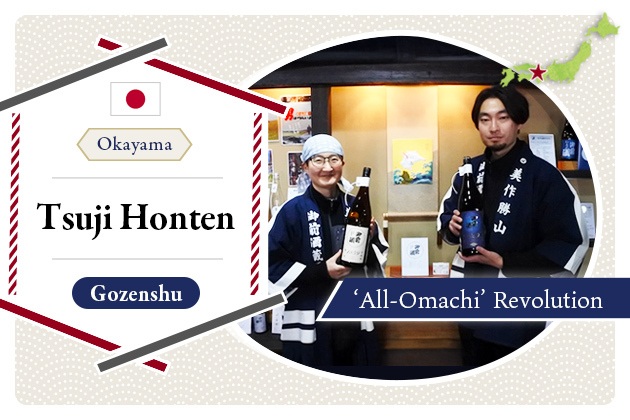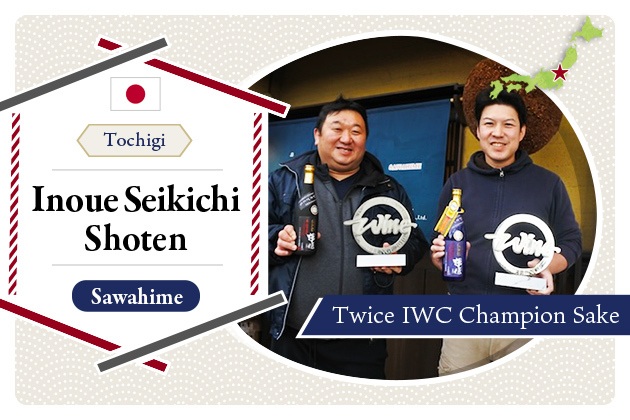
2024.08
28
An Indicator of Sake’s Freshness?—Learning about “Production Date”
Sake labels bear the production year and month. Perhaps some of the readers look at the date thinking “I want fresh sake.” However, printed production year and month do not necessarily indicate the “time when sake was brewed.”
In this article, we will learn about when these “production year and month” and “production date” actually mean. In addition, we look at some manners in which breweries try to make the date easier for consumers to understand.
Rule of thumb is the “timing of bottling”
According to the National Tax Agency’s regulations, the production date of sake is the “timing when a container is filled and sealed hermetically with the intent to sell.” That is, regardless of when it was brewed, production year and date reflect the timing of bottling.
Source: The Standards for Manufacturing Methods and Quality Indication for Sake, National Tax Agency *in Japanese
Much sake is brewed during winter and shipped after a period of storage or maturation. The standard sake brewing until now has been that the process from fermentation to pressing (*1) is completed when it is cold, then the sake is stored in the tanks for a few months to a year so that the flavor gets settled before getting bottled. In some cases, sake is matured for years before it is bottled.
(*1) The step in which the sake mash is pressed and liquid (sake) and solid (lees, or kasu) are separated.
For bottle-stored premium sake, the “day of commercialization of product”
Recently, more sake is bottled right after pressing and bottle-stored to avoid oxidation in the tanks.
Tank-stored sake are shipped to shops soon after being bottled. In case of bottle-stored sake, it takes time from bottling to when it becomes available in shops. When the rule that the production date is the bottling date is followed, sake that is produced at the exact same time and stored for the exact same period may bear different production dates depending on whether it was stored in tanks or bottles.
The relations between the timing of production and the date of production on the label
To circumvent such confusion, the National Tax Agency issued an exception to the dating rule. “For sake categorized as premium sake (*2), placed in a container, refrigerated or otherwise stored specially before being sold, the production date is the date of commercialization of product for sale after the storage is complete.
Source: The Standards for Manufacturing Methods and Quality Indication for Sake, National Tax Agency *in Japanese
(*2) Tokutei meisho shu in Japanese. Terms such as daiginjo or junmai, used to describe seimaibuai (rice polishing ratio), whether jozo alcohol was added, etc.
There is no clear definition of “the date of commercialization of a product for sale after the storage is complete.” In practice, it usually refers to the date when the label is placed on the bottle for shipment.
This exception to the rule has allowed for bottle-stored sake to be dated at the timing before shipment, and the discrepancy caused by storage method has been resolved.
Breweries’ effort to represent the actual timing of production
Even then, the fact the “production date” on the label differs from the actual timing of production is not overly consumer-friendly.
That the production date indicates the timing of bottling or commercialization of product has to do with the timing of taxing at shipment. For the taxer, it may be convenient that the labels show “when the sake was ready for shipment.” Nevertheless, consumers are probably more interested in “when the sake was made.”
Some breweries are pursuing consumer-friendliness by indicating the “date of pressing” apart from the “date of production.” Learning when the sake was pressed from the label allows for the consumers to imagine how long the sake was matured for, and what it may taste like.
Various brewers are making an effort to make labels easier to understand, helping consumers to imagine the flavor.
Summary
The date of production for sake is defined in two parts:
- The timing when a container is filled and sealed hermetically with the intent to sell.
- For sake categorized as premium sake, placed in a container, refrigerated or otherwise stored specially before being sold, the production date is the date of commercialization of product for sale after the storage is complete.
Production year and month refer to the so-called “timing when the sake was ready for shipment.” Beware that the freshness is not necessarily represented in this piece of information. If the reader feels like young, recently pressed, fresh-flavor sake, perhaps ask the shop staff. They might recommend sake including some that keeps freshness even after a period of time.
These days, there are breweries that make an effort to make labels easier to understand for consumers, for example by printing the date of pressing or shipment besides that of production. Next time the reader drinks sake, take a good look at the description of the label and read into the effort that the brewery may be making.
Pickup Articles
2019.01.18
2019.01.25
Trending Articles
Popular Articles
Recent Articles













